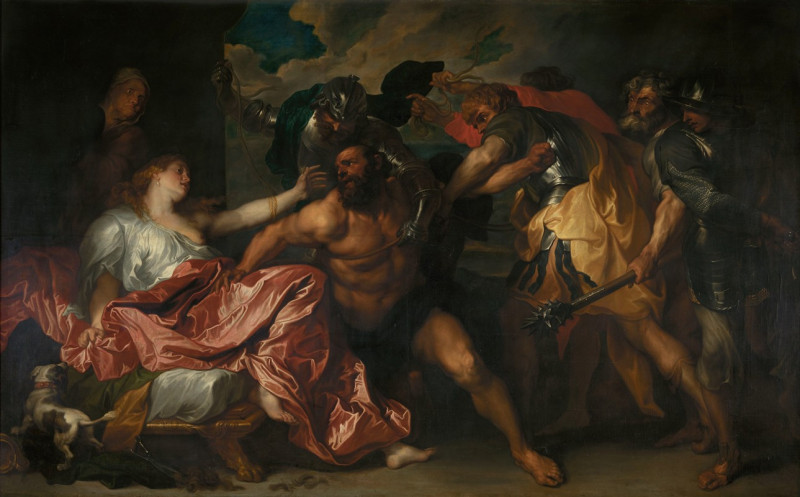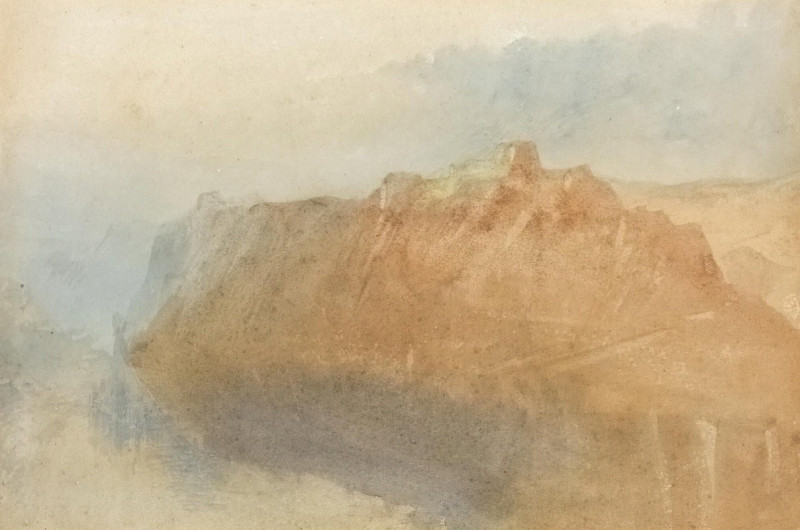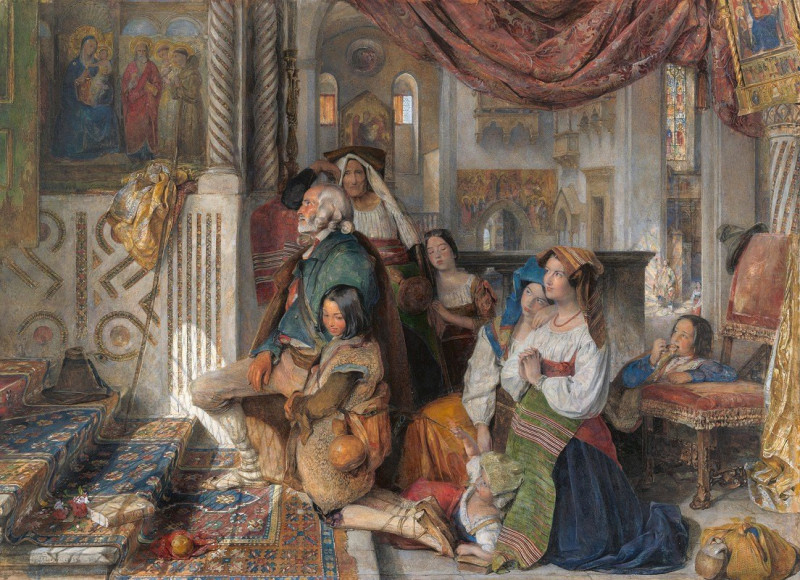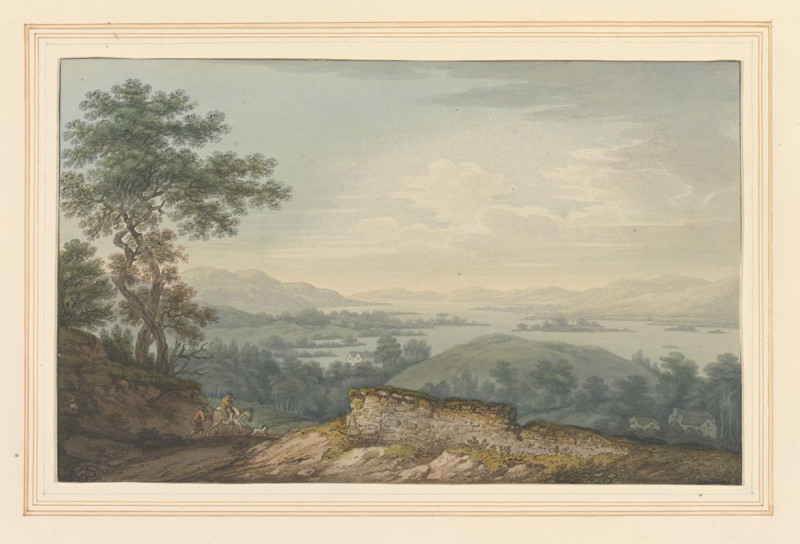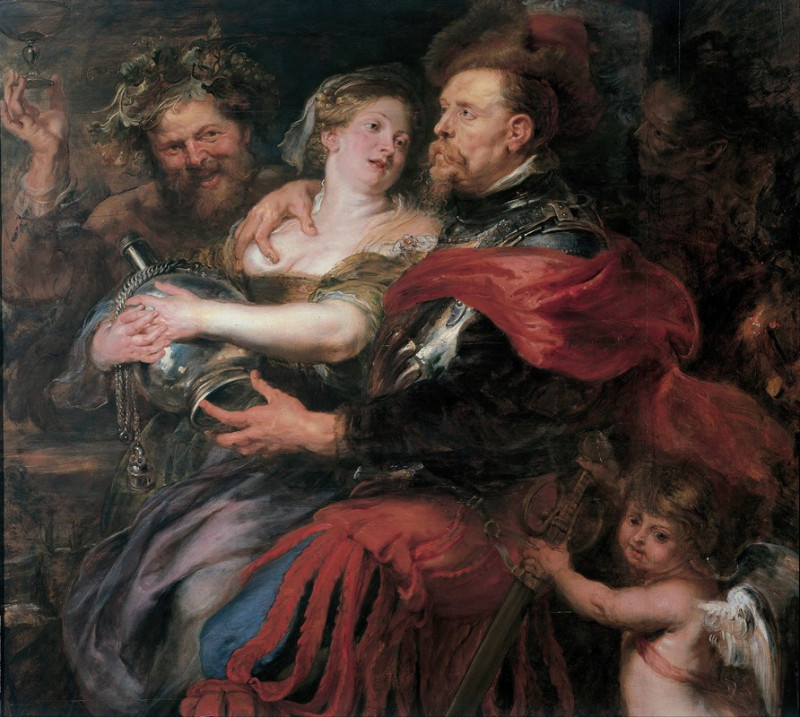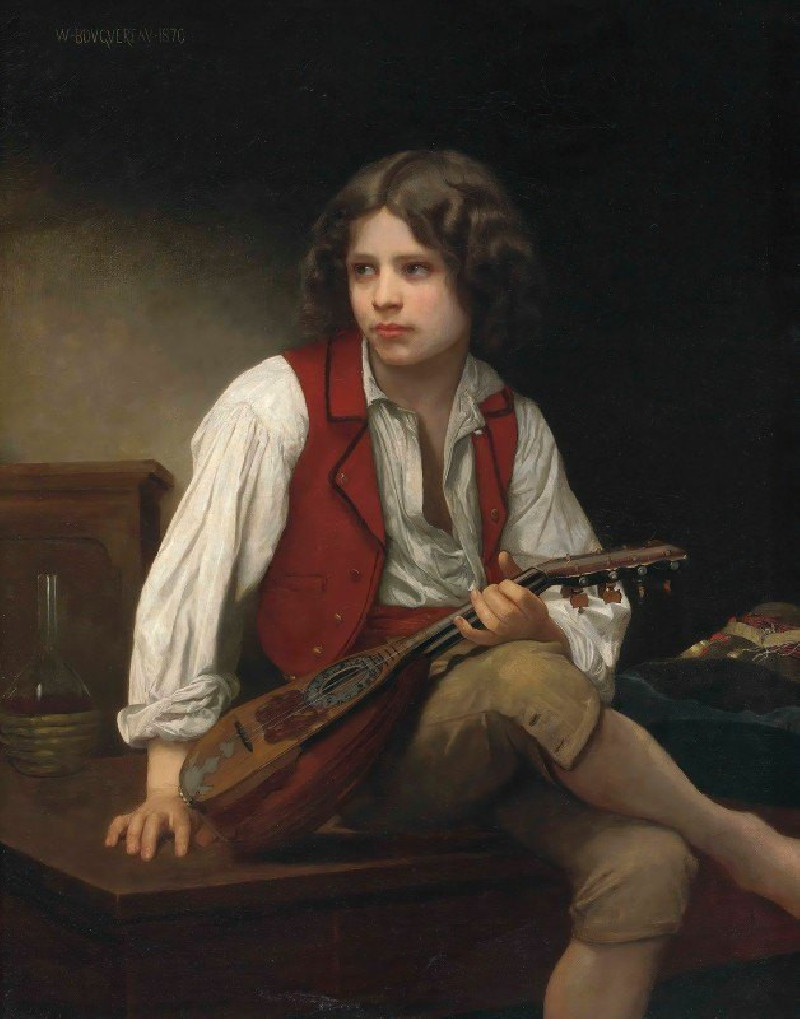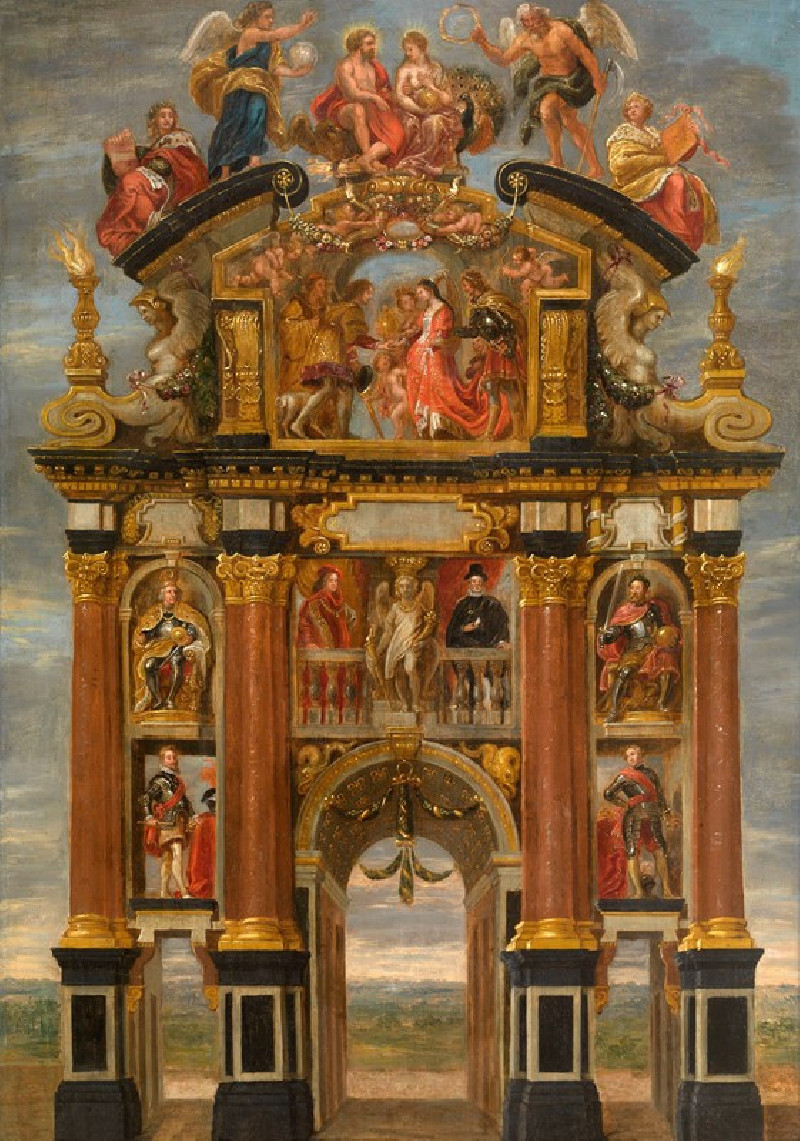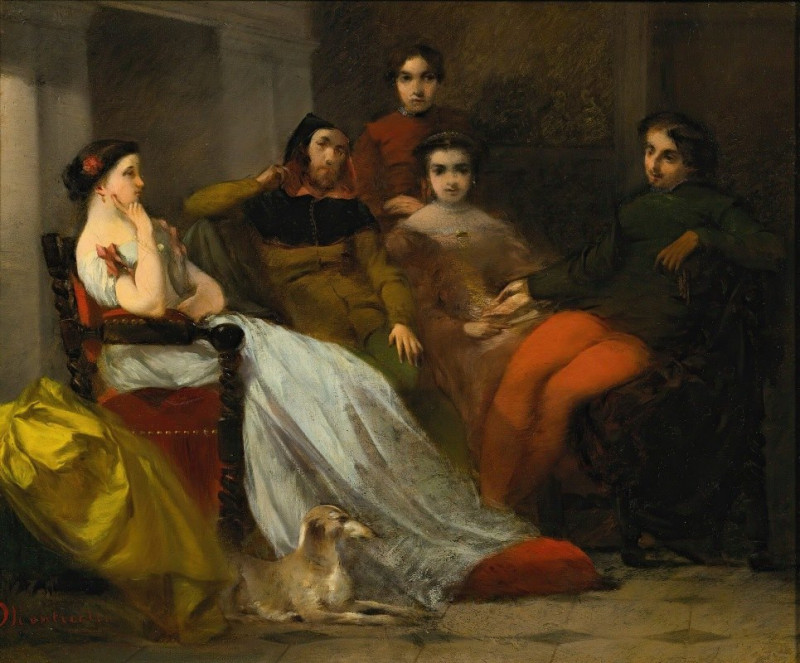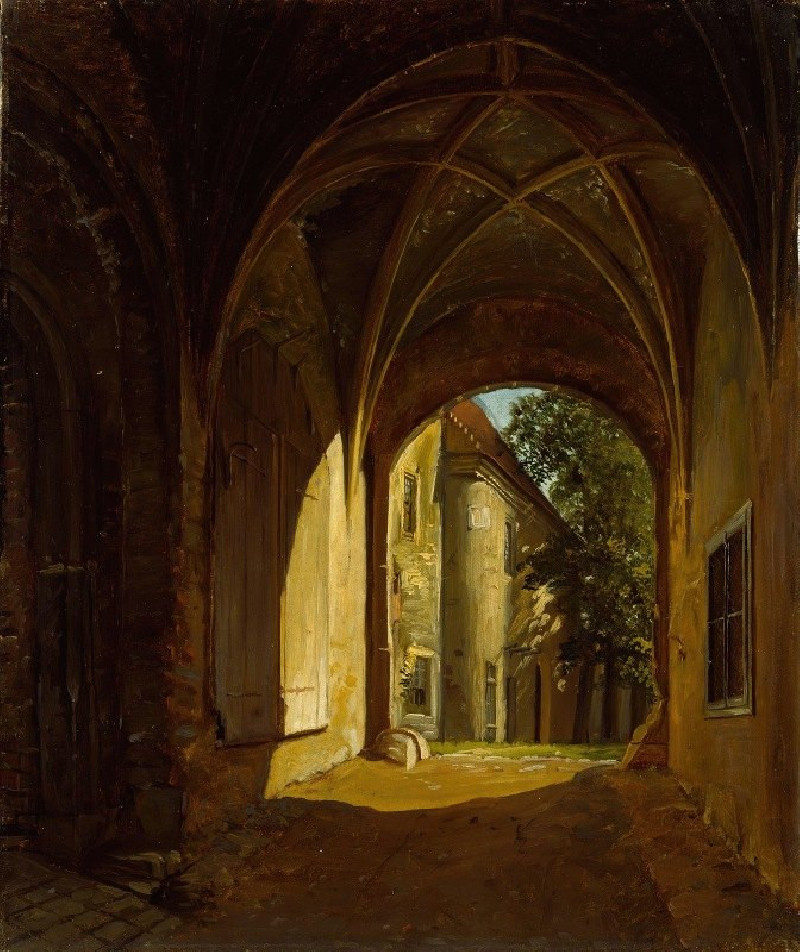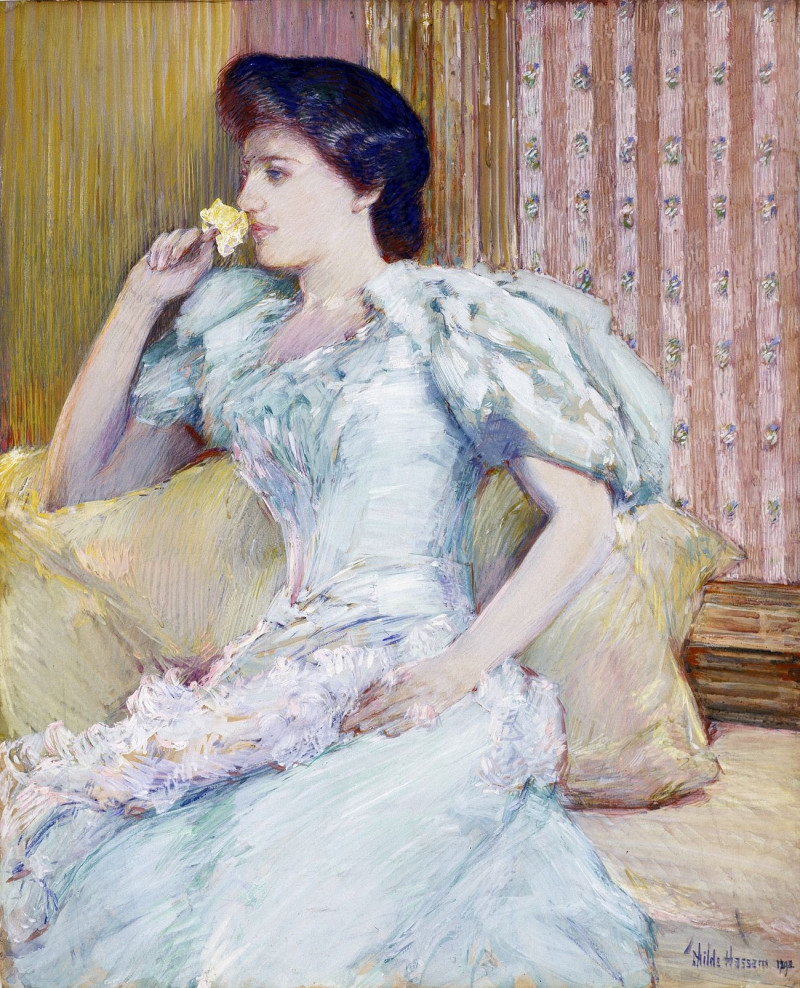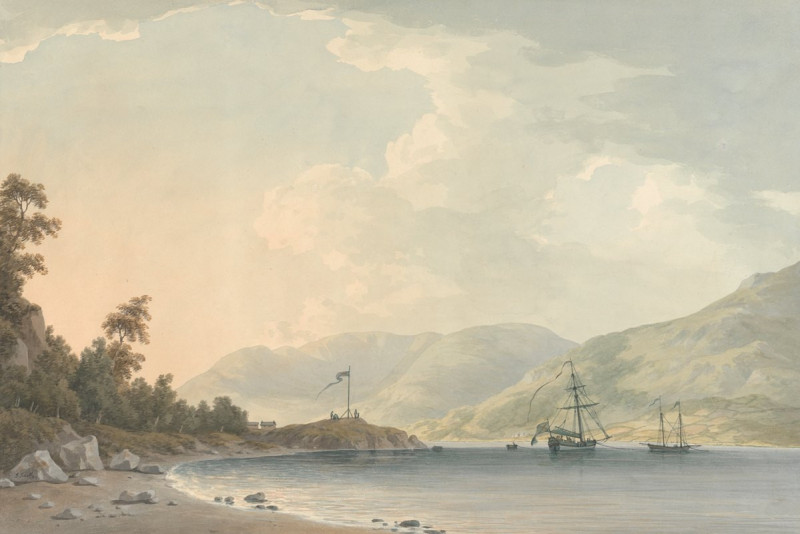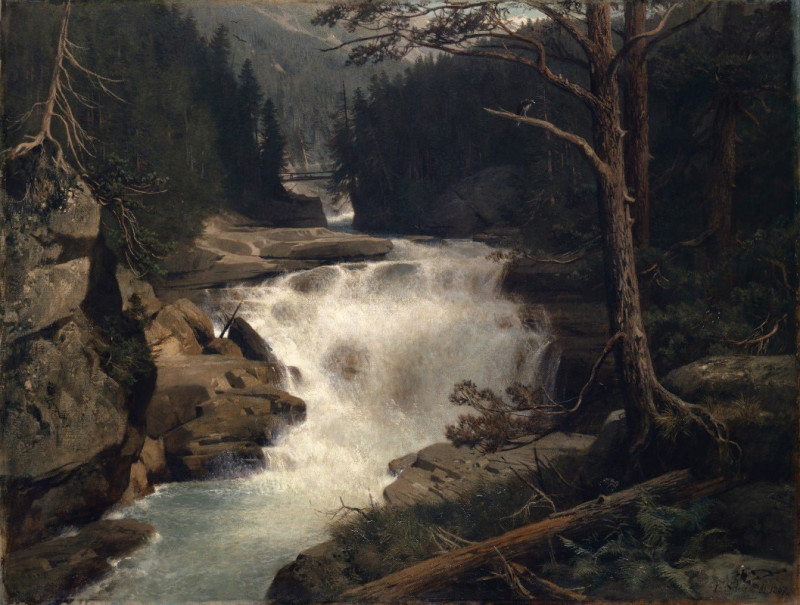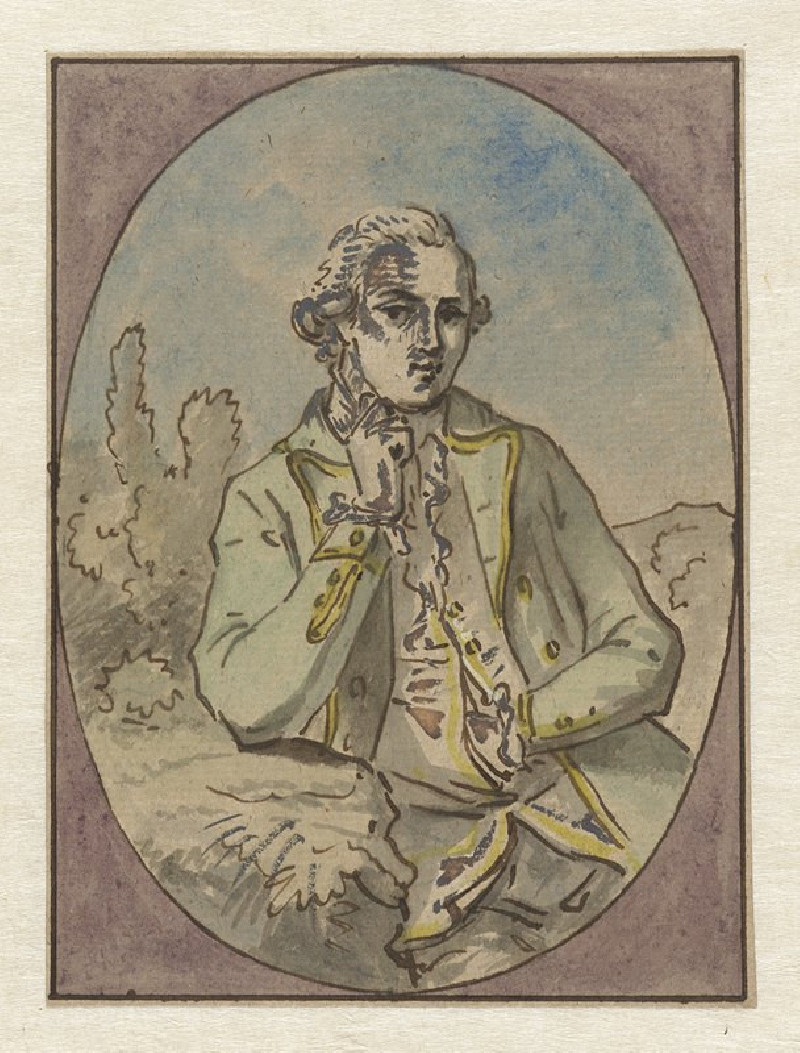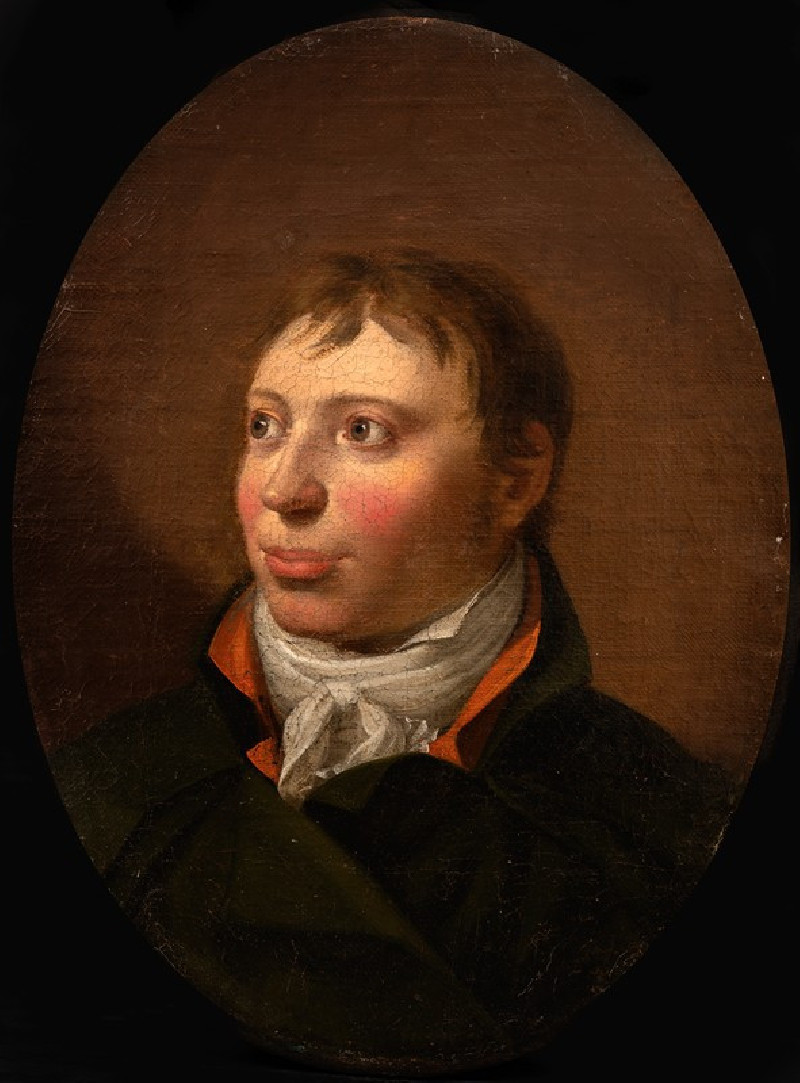Samson and Delilah
Technique: Giclée quality print
Recommended by our customers
More about this artwork
"Samson and Delilah" by Anthony van Dyck is a striking masterpiece from the Baroque period, rich in emotional insight and dramatic intensity. The painting epitomizes the moment of betrayal wherein Delilah, a figure central to the narrative, is depicted reclining, her expression simultaneously serene and detached as she hands over the once-mighty Samson to his captors. Samson, drained of his superhuman strength after Delilah has his hair cut, the source of his strength, struggles in vain against the soldiers who are ferociously seizing him.Van Dyck's use of chiaroscuro effectively highlights the tension and movement within the scene. The contrast of light and shadow magnifies the muscular intensity of Samson and the apprehensive faces of his captors. The rich, deep colors — particularly the striking red of Delilah’s robe — enhance the emotional depth and contribute to the overall dramatic effect.
Delivery
Returns
Sir Anthony van Dyck (1599 – 1641) was a Flemish Baroque artist who became the leading court painter in England after success in the Spanish Netherlands and Italy.
The seventh child of Frans van Dyck, a wealthy Antwerp silk merchant, Anthony painted from an early age. He was successful as an independent painter in his late teens, and became a master in the Antwerp guild in 1618. By this time he was working in the studio of the leading northern painter of the day, Peter Paul Rubens, who became a major influence on his work.

